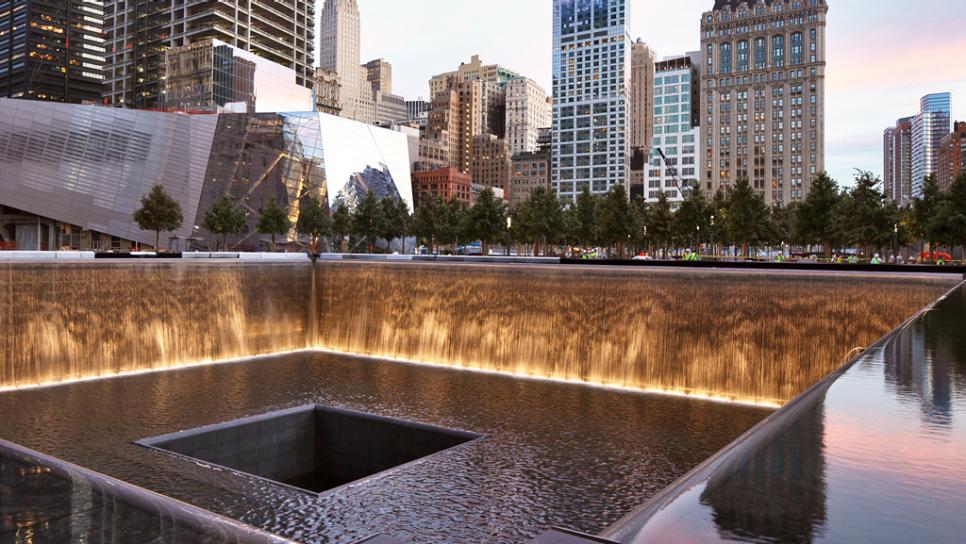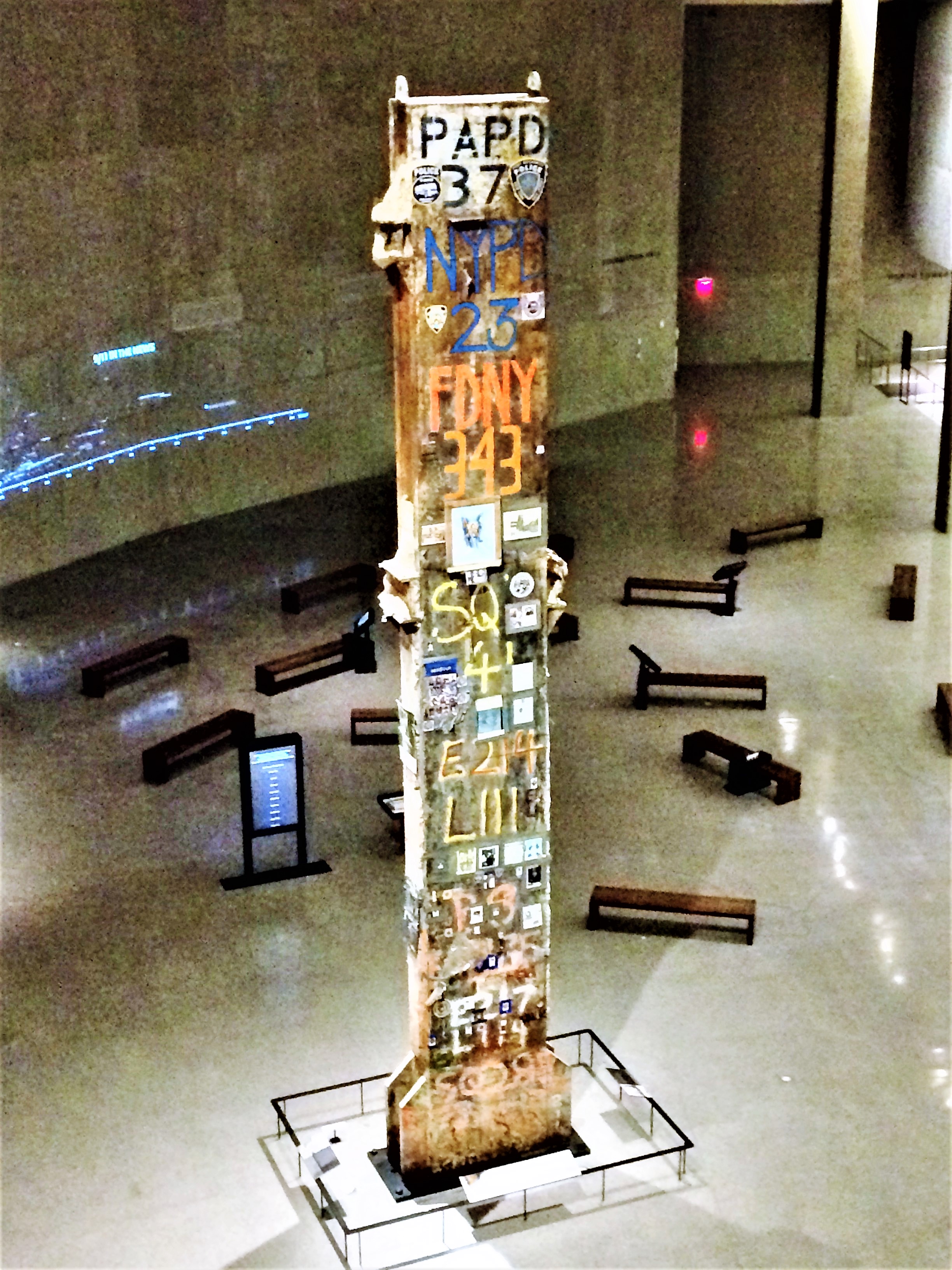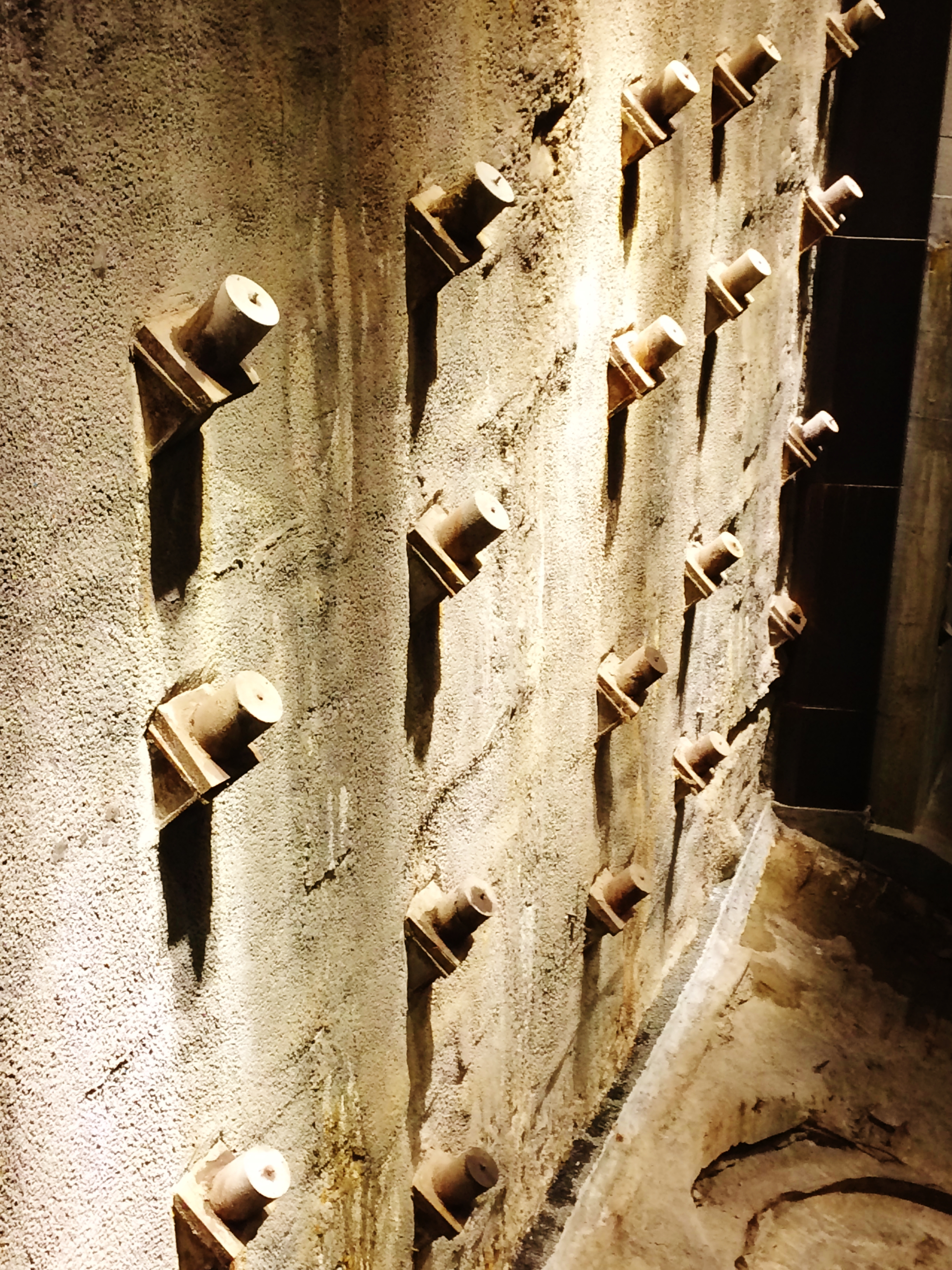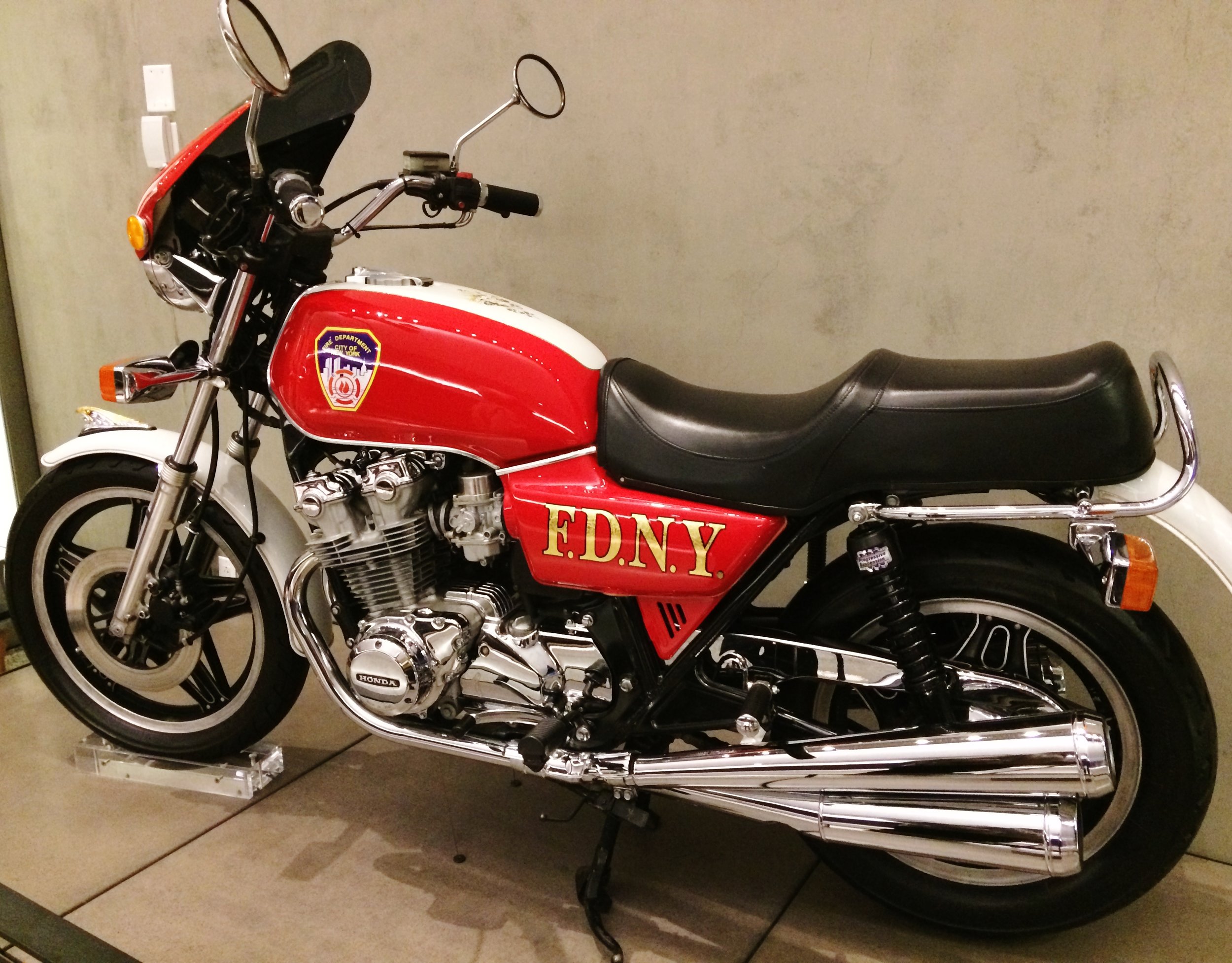9/11 Memorial and Museum
If you have but one day to spend in New York, do what Pope Francis did and visit the 9/11 Memorial Plaza and Museum. Situated in what may well be the hippest part of town, the neighborhood is now home to 64,000 residents, including many families with young children. Before the year 2000, a mere 22,900 residents called Wall Street and the Battery Park area home.
We visited early one Sunday morning while residents were still in their beds, the streets half-deserted. Walking south on newly-reopened West Broadway, closed for more than 12 years after 9/11, we came to the soaring Path Transportation Hub, designed by the renowned Spanish architect Santiago Calatrava. It's a beauty, and, for me, a wish come true. Here's why.
A Thorny History
A few years ago, there had been an exhibit at MoMA with drawings and models of Calatrava's ethereal bridges, amazing train stations and dazzling museums that span the world. Viewing the exhibit, I thought it a great loss that we New Yorkers could not boast of having a single one of his breathtaking designs. Now, years later, the city has somehow muddled through the acrimony and contentiousness that surrounded the building of the 9/11 Memorial and Museum. Call it a minor miracle, but emerging from all those bruising fights among competing interests is a stunning transportation hub.
Rising from the Embers
Even from afar, the hub resembles a gargantuan mythical bird come to earth. Or in the words of its architect "a bird being released from a child’s hand." Whether it strikes you as 'landing' or 'ready to take flight,' it is stupendous.
It's hard to imagine that a building meant to bring together eleven heavily used subway and railroad lines could look as otherworldly as this one does. The day we visited, if most of the construction fences were down, the barricades surrounding the site were still in place. We did not venture in, intent as we were upon reaching the memorial.
If there's one problem with this breathtaking addition to the downtown scene, it's the cost. According to the Wall Street Journal (9/10/15), Calatrava's transportation hub has been a $4 billion boondoggle, costing taxpayers double its 2004 estimate. Ah, what price beauty?
A Foggy Day in New York Town
Continuing south, we pass 'Freedom Tower', at No. 1 World Trade Center. It’s raining lightly, so our view of the 1776-foot structure is blanketed in fog. Nonetheless, many are waiting patiently for the first elevators of the day to whisk them to the One World Observatory, 1,250 feet above the ground level. A sign in the lobby indicates that visibility from the observatory this morning is zero, but no one seems to care.
The 9/11 Memorial Plaza is a place of great beauty and solemnity, the visitors hushed, the tone respectful. The reflecting pools, each covering nearly an acre, are bounded by bronze parapets inscribed with the 3,000 names of those who perished in the 9/11 attack on our country.
The reflecting pools, built over the footprints of the World Trade buildings brought low, are surrounded by graceful plazas planted with 400 white oak trees. This elegant sanctuary, restrained and elegiac, has the largest man-made waterfalls in the United States. Walking the perimeter of the pool, we finger the names of those who perished in the first attack at the World Trade Center on February 26, 1993, and those who died on September 11, 2001, including the passengers and crew of the plane bound for Washington DC.
With timed tickets in hand, the line moves swiftly. Soon we find ourselves immersed in a surreal landscape, deep within the subterranean reaches of the former World Trade Towers. The museum holds all manner of artifacts and memorabilia, including photos of the deceased and two remarkable films -- the first recalling the day the skyline was blotted out and changed forever, and the second, using time-lapse photography, the incredible rebuilding at Ground Zero.
Within the Sanctuary of Good and Evil
In the photos below, to the left is a remembrance, a beam from the original structure. The easily recognizable PAPD 37 represents the 37 Port Authority police officers lost in the line of duty. NYPD 23 represents 'New York's Finest,' the New York City police officers lost. And FDNY 343 represents 'New York's Bravest,' the 343 firefighters who in the greatest acts of generosity and service gave their lives trying to bring others to safety. The center photo shows the slurry wall of one of the World Trade building, and to the right a restored FDNY motorcycle belonging to one of the victims.
"The grief is palpable," the pope told the 700 religious leaders of all faiths who had assembled at Ground Zero to meet and pray with him. So, too, "the capacity for heroic goodness."
There's No Forgetting
After a sobering two hours, we head uptown to Balthazar, a brasserie in SoHo that thanks to its belle époque decor and lively Parisian atmosphere has been an icon in the culinary landscape of New York since opening day.
According to no less an authority than Zagat, Balthazar is "a certified classique." What do others say? Magnifique...Always buzzing... Mouth-watering breads. Arriving shortly before noon, we were ready for brunch, but needed to wait a few minutes until the clock struck the hour before imbibing a champagne mimosa.
The 9/11 Memorial and Museum has become the destination of choice for millions of visitors to the city, second only to attending a showw on Broadway show. Have you been to the memorial? If so, what made the strongest impression? Is it on your list?
That's it for today, guys and gals. Thanks so much for stopping by. I'll be looking for you next week, when I'll have the coffee ready. until then, mes amis, may life be good to you.
PS Fast forward: In September 2016, New York Governor Andrew Cuomo signed into law a bill that allows restaurants and bars to start serving alcohol at 10 a.m. on Sundays, easing restrictions set by 80-year-old blue laws. Restaurants were previously required to wait until noon before selling alcoholic beverages.







